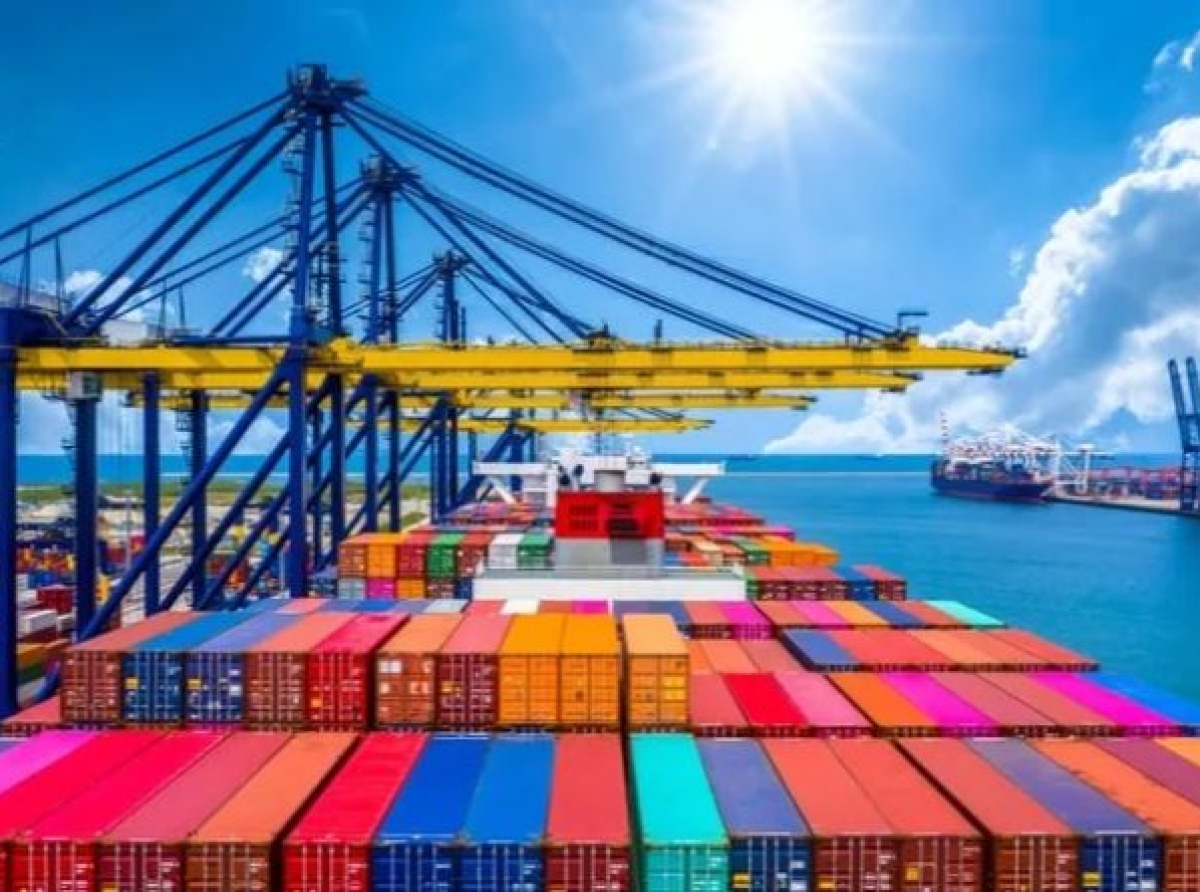Time is Money: The Crucial Role of Timely Delivery in Textile Exports

01 June 2023, Mumbai
The global textile industry holds significant size and strategic importance. Currently, it is worth US$ 309 billion. Its growth is accelerating and it will likely soon reach US$ 856 billion.
In addition to the conventional fashion markets, emerging economies like China and India are expanding quickly. In the near future, they are anticipated to dominate the textile industry.
Logistics is at the heart of the business
The logistics sector has been and will continue to be vital to the textile industry. Without the proper transfer of goods from one location to another, no enterprise can endure.
The textile sector is not an exception! Transporting raw materials and textile equipment to production facilities is made easier by textile logistics. Additionally, it aids in the finished goods' distribution to the intended market.
Role & scope of the Logistics sector
Textile logistics is a rapidly developing industry. Manufacturers and merchants are aware of how crucial transportation is for getting products to their customers.
They will spend any amount of money to obtain high-quality services, however, price does not totally control the process. They make sure that their final products and raw materials are transported precisely on time.
Textile logistics place a high value on timeliness. If one of the two parties consistently fails to deliver the items by the scheduled date, its market reputation will undoubtedly deteriorate.
If the assignment is not finished and delivered on time, the deal might not produce the expected results. The development of a textile firm depends heavily on timeliness.
Competitive landscape
This issue is of vital importance to any organization involved in textile logistics. It must always keep time, regardless of the nation, state, city, or area it is in. If not, it might not be successful in the market.
Customers pay them mostly to ensure that their items get to the specified location on time.
Numerous events illustrate the value of timeliness in textile logistics. When products were delivered late, a logistics company with headquarters in China was sued by the client. All of the company's couriers' responsibilities were placed in its capable hands.
Due to internal staff inefficiencies, a key courier carrying documents arrived after the scheduled time. As a result, the client organization suffered significant losses because an essential message could not be delivered.
Differentiability
Another instance included a textile manufacturing company that experienced losses due to the late delivery of raw materials. It contacted an unreliable UK textile shipping business and could not get its cargo of raw materials on schedule.
This incident caused its final goods delivery to be delayed, which had an impact on the company's profitability. The cost has some bearing on timeliness in the logistics of textiles. The planet has many different forms of transportation.
Each has a different charge and speed. The delivery methods by air, water, and land vary. The fastest is air. It, therefore, costs extra. Additionally, goods can be transported via road, rail, goods ships, and other forms of transportation.
Key parameter
Many textile logistics service providers consider timeliness to be a quality indicator. If they can consistently deliver the requested goods or materials on time, they offer great quality.
Their quality is bad if they are unable to provide the goods to their client on schedule.
Timeliness is the face of quality in the logistics sector of the textile industry. This method is used to evaluate the service providers' quality. Everything is transient in the textile and fashion industries. Anything that is popular today might not be available tomorrow.
The raw materials must be moved quickly and processed. Any logistics company may fail to fulfill its objective if it is not prompt in the transfer of goods and raw materials. Time Vs Money
Additionally, under the "list of importance in textile logistics," timeliness now has a point added. The bulk of the time, the costs of the raw materials utilized in the textile industry are very volatile. For instance, cotton has a price that varies greatly.
The company will be obliged to offer the finished goods at a cheap price if it purchases cotton at a higher price and later sees cotton prices decline. Without a doubt, textile logistics place less emphasis on timeliness than the edible goods sector does.
Value for time
In the textile industry, raw materials virtually never deteriorate. They can be kept for a long time in go-downs. They are not edible, hence they don't have a shelf life or expiration date. However, the textile logistics sector also takes punctuality into grave account. It is absolutely impossible to disregard the value of timeliness in textile logistics.
Actually, punctuality is crucial in every area of logistics. But it occupies a unique position in the textile sector. Making a concession in this area is absolutely detrimental to the company. Because of this, textile logistics service providers take extra care to complete all tasks on time.
E-Commerce Boom Drives Logistics Expansion
India's e-logistics sector is experiencing an impressive compound annual growth rate of 35 percent, making it one of the largest and fastest-growing logistics markets globally.
The surge in e-commerce has played a significant role in this growth, with e-commerce logistics shipments expected to quadruple in the next five years.
The convenience factor and accelerated online adoption, driven by the COVID-19 pandemic, are propelling the overall online gross merchandise value (GMV) to reach $49-52 billion, a 37 percent increase from last year. Tier-II-plus cities and towns are emerging as key drivers of growth, representing a significant portion of the total shopper base.
Super Apps and D2C Revolutionize Markets
India's direct-to-consumer (D2C) market is thriving, thanks to the emergence of super apps introduced by major companies like the Tata Group and Reliance Group.
These super apps consolidate various services and offerings, providing consumers with a seamless experience. This innovation is reshaping the e-commerce landscape and further fueling the demand for efficient logistics solutions.
Growing Geopolitical Tensions
In India, e-invoicing and the implementation of the goods and services tax have streamlined interior logistics processes.
Meanwhile, global shipping and logistics have faced significant challenges due to geopolitical tensions and disruptions. However, recent data from Container xChange indicates that trade is starting to see relief, with a persistent downward trend in container prices, making businesses more competitive.
National Logistics Policy (NLP)
Transforming India's Logistics; The availability of multiple payment options and the growing popularity of digital commerce, such as UPI, no-cost EMI, and buy now, pay later (BNPL), are driving the adoption of e-commerce logistics.
The National Logistics Policy 2022, formulated by the commerce ministry, aims to improve India's trade competitiveness by reducing logistics costs.
The goal is to bring down logistics costs from the current 14 percent of GDP to less than 10 percent within the next 4-5 years.
Technology is an enabler
Tech-enabled logistics service providers are addressing multiple segments of the Indian logistics market, offering full-stack solutions. With the rise of e-commerce and increased awareness of the industry's challenges and growth opportunities, investors are funding new ventures in the logistics sector.
Promising Growth
The convergence of e-commerce growth, digital adoption, favorable policies, and tech-enabled solutions is shaping a promising future for India's logistics industry.
Tech-enabled logistics players are venturing into adjacent segments, such as hyperlocal delivery, express delivery, trucking, and more. This expansion opens up further avenues for growth and innovation within the industry.
As India's logistics sector undergoes significant transformation driven by technology, it is becoming increasingly efficient and accessible for businesses, particularly small- and medium-sized enterprises, to transport goods.
Latest Publications

































